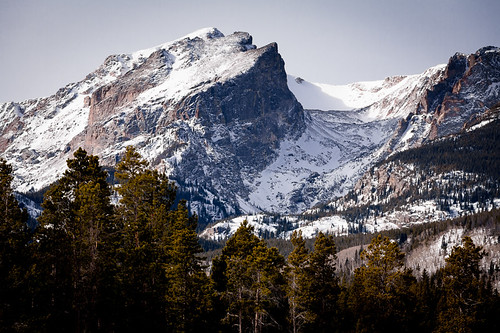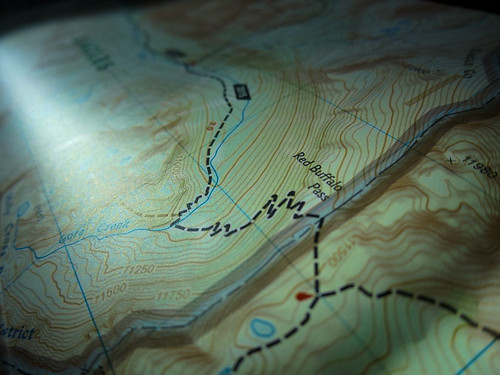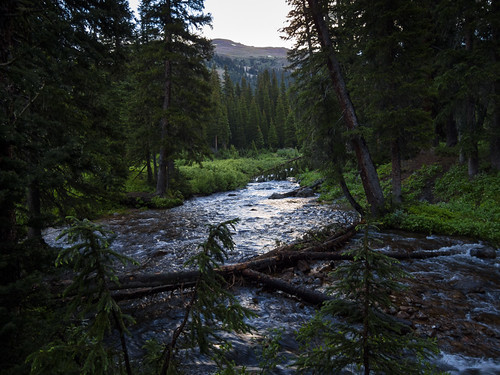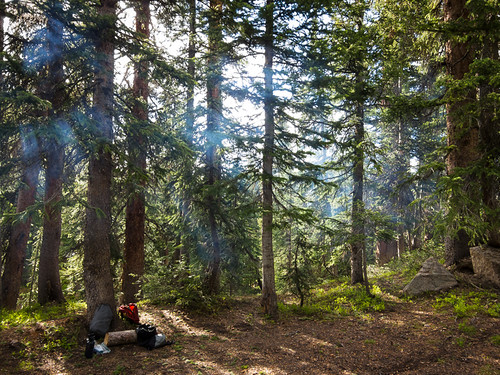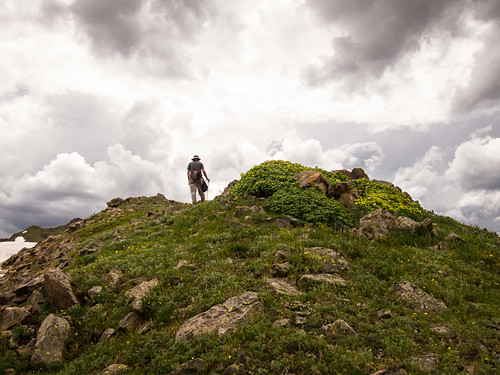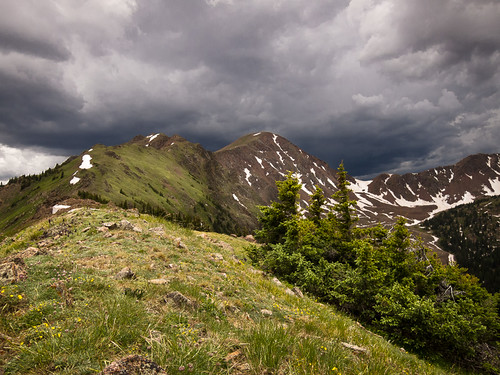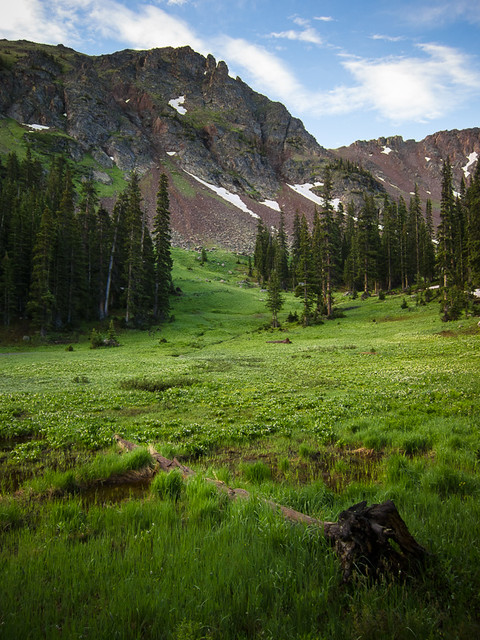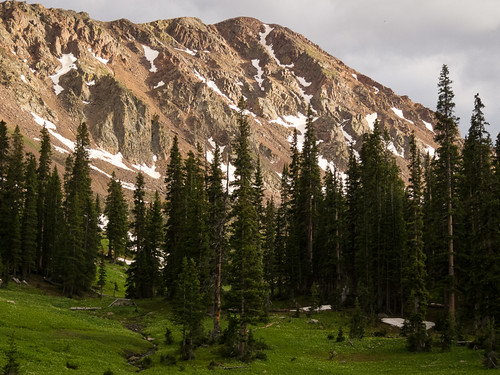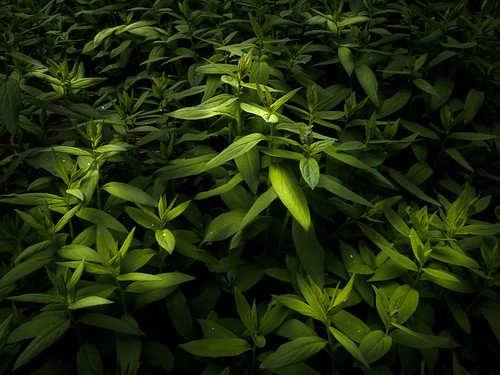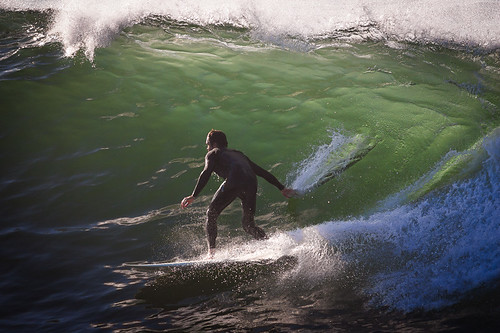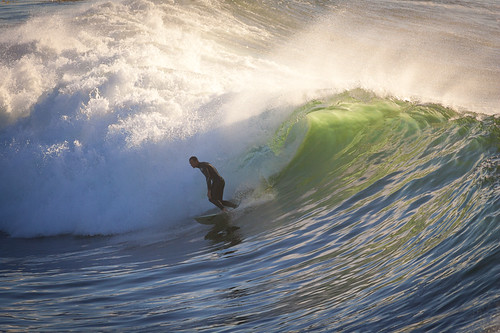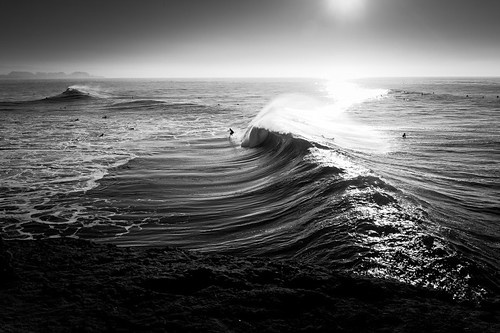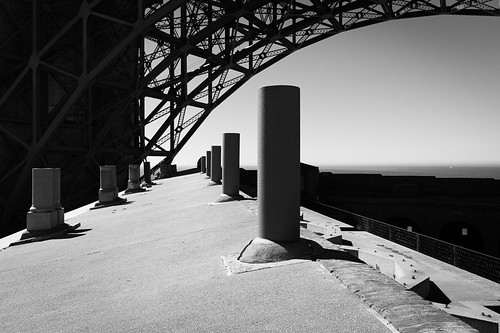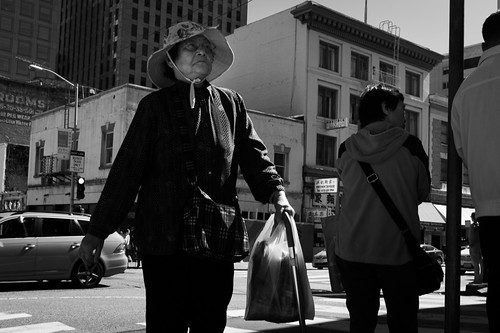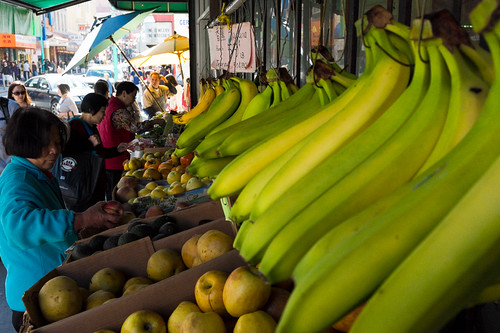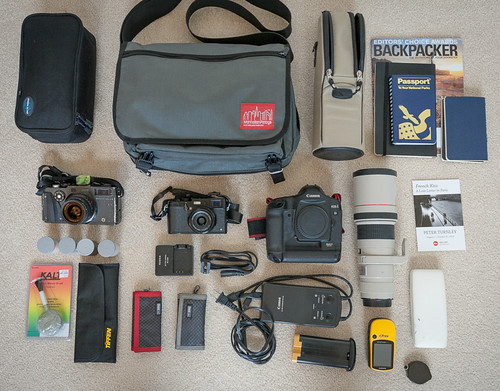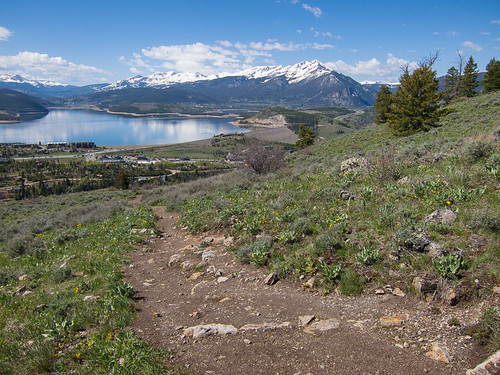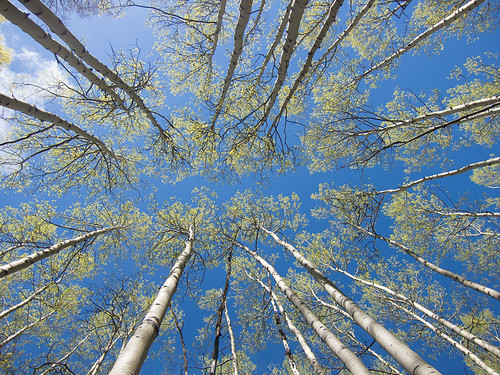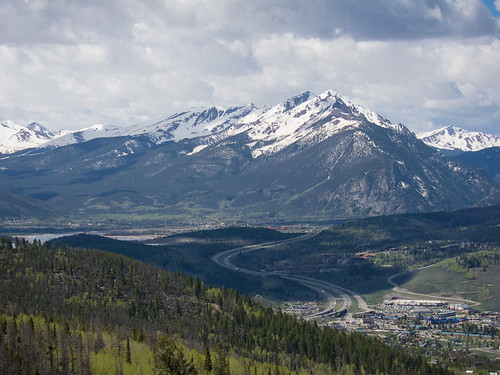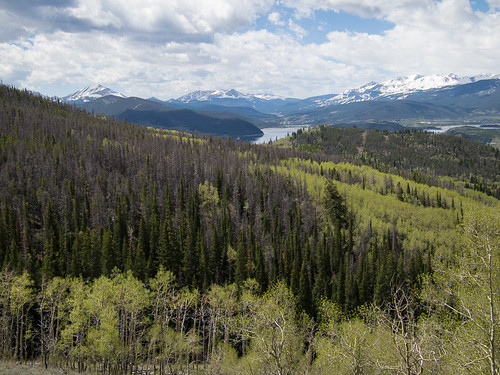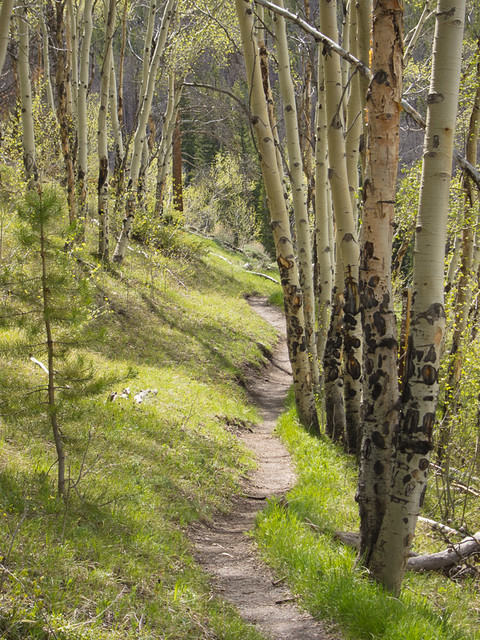Just a quick merry Christmas to everyone. 2014 has been quite a year, to say the least. 2015 should be full of possibilities.
Thursday, December 25, 2014
Sunday, November 2, 2014
Gore Creek Trail
The plan was simple: hike four miles in, another four miles in, then eight miles back out, preferably downhill most of the way. The trick was finding the right trail. After pouring over maps for several hours in June, my friend Peter and I finally decided on the Gore Creek Trail near Vail.
After carbing up at Chipotle in Silverthorne, we drove over Vail Pass then hit the trailhead (39° 37.660'N, 106° 16.485'W) just off I-70. The trail was steep and hot; not a good start. As we moved east up the creek valley, our cell phones lost signal, and some cooler clouds rolled in. The situation was improving.
We reached camp 1 (39° 37.492'N, 106° 12.314'W) as the afternoon ended. Eager to beat the darkness and any additional weather, we threw up the bear lines and set up the tent in one of the flatter areas we could find off the trail, back in the trees. Since the trail was part of the Eagles Nest Wilderness, the rules were clear, but there were no official spaces for anything. In other words, do your best. We considered taking the steep side trail up to Gore Lake, but time and weather were against us. Instead, we examined the small Swedish grave site and explored our options for fording Gore Creek the next day. We waved to some passing day hikers, not realizing that they would be the last people we'd see for a while. We were on our own.
Our dinner consisted of 9-year-old Mountain House Chicken Teriyaki, which was best described as "edible." It was time to pack it in.
The next morning was sunny enough to dry out the tent next to the grave site. After some breakfast and instant coffee, it was time to cross the creek. While the water was only knee-deep, it was also flowing at a fairly good pace. I only had one trekking pole to stabilize with. The rough, slippery creek bed was murder on my bare feet. Peter had his camera up and ready to get the action shot of me falling in. Thankfully that never happened.
Once across and reassembled, we were rewarded with one wildflower meadow after another as our hike continued further up the valley. The open spaces and surrounding mountains made us want to stop and keep going at the same time. It just got better and better.
After another, much easier creek crossing, we made it to camp 2 (39° 37.025'N, 106° 10.985'W) around lunch time. We'd made it to the western base of Red Buffalo Pass, an open meadow surrounded by 12,500 foot peaks.
We set up camp, threw together our day packs, and headed east for the pass. At this point we were already at 11,000 feet at the start of the trail, and my lungs were reminding me of this every step higher. As we worked our way up, the view to the west revealed the entire Gore Creek valley we'd just traversed. Stop. Catch breath. Eat protein gummies. Drink water. Take pictures. Repeat.
Perseverance, and Peter's patience for me, eventually got us to the top of the pass. We were in the land of marmots and glaciers, well above the treeline. The views were nothing short of spectacular, with glacial lakes, Eccles Pass, Buffalo Mountain, and Silverthorne to the east, Red Peak to the north, and Gore Creek Valley to the west. We could have stayed all day, but a thunderstorm snuck up on us. Trail running has never been my thing, but lightning has a way of motivating.
Being back at the bottom of the pass wasn't a bad place to be. As evening set in, beams of sunlight shot under the clouds, through the creek valley, hitting the peaks and meadows around us with the kind of light painters dream of.
The night was uneventful, and surprisingly warm for 11,000 feet. That morning we took a few more pictures, then packed up early for the trek down to the trailhead.
It had been about 36 hours since we'd encountered another human being. Half way back to camp 1, we came across a group headed for Red Buffalo Pass with some very large packs, and a couple of light-and-fast hikers doing the whole trail through in one day; I can see the appeal of the latter. As our altitude dropped, the temperature started to climb, and the moist ground that was covered in wildflowers gave way to dry scrub brush. A couple open rock faces along the way gave us a chance to dry out the tent in the Sun and enjoy a bit more scenery.
It had been an amazing hike. I can see why the really great photos are taken a bit off the beaten path. At our most remote point, we were over four miles from the nearest road. We did have a little bit of cell service at the very top of Red Buffalo Pass, but we were completely out of contact during our entire time in the Gore Creek valley, which is the way it should be.
Whether you're a foot, a mile, or 20 miles out there, the point is that you're out there. These photos were all taken with the tiny Canon S95, but that doesn't really matter. Happy shooting.
Saturday, October 25, 2014
Return to Steamer Lane
As I mentioned in my bag post, one of my goals during the trip to northern California was to get in some good surfing photography time. Was it worth lugging the 1D Mark II (and its enormous charger) and the 400/5.6 for just one morning of shooting at Steamer Lane? You bet! Even though this camera is 10 years old, there is still plenty of solid, raw data coming off that pro-grade sensor to run circles around many newer cameras. Surfline reported a 10-12 foot swell coming in that Sunday morning, and it did not disappoint. Here's the take, in true TopFivePhotos style...
I know I used that last shot in my previous post, but it's probably the single best shot I got out of the Fuji during my time with it. Happy shooting.
Tuesday, October 21, 2014
What The Fuji
By which I mean, I've really been wanting to know, for a while now, what it's like to use one of the new Fujifilm cameras. I'd considered renting the X-E2 and the 23/1.4, but in the end renting an X100S seemed like it would capture the fundamental Fuji experience at about half the rental cost.
The tl;dr version is that the Fuji's sensor doesn't quite live up to the spectacular optics that Fuji is known for. I still love the optics in my Hasselblad Xpan (built by Fuji many years ago).
I really enjoyed the aperture and shutter controls, but there were other little things besides the sensor that simply didn't make sense to me. For instance, if I've got the camera in EVF mode, why does the EVF retract every time I turn the camera off? Just leave it in place. If the on/off switch is convenient enough (eg. Nikon and Fuji), then I'm one of those people that turns the camera off and on between bursts of shooting to save the battery. That's a lot of actuations for the EVF. The Xpan has a similar mechanism for the lens magnification when you put on the 90/4 lens. And you know what, that's the one part of the camera that's totally broken. I foresee a similar fate for the EVF on the X100S. It makes me think that an X-E2 might make more sense since it only has an EVF with no extend/retract mechanism to break.
Don't get me wrong, there were some things I liked about the camera. The fact that I could see what my shot would look like in B&W through the EVF as I was shooting was a revelation that would never have occurred to me if I hadn't rented the camera and tried it for myself. It wasn't an exact translation to what I would later see on screen, but it was pretty good.
Another thing that didn't make sense to me was that the Q menu showed up in the viewfinder when I had the rear display turned off. Why would I want to hold the camera up to my eye to change settings like that? Those people that hold up their iPads to take pictures look pretty dumb, and I felt just as dumb holding the camera up to my eye to change settings. Just put the menu on the rear screen, Fuji.
Some of my gripes with the camera might have been addressed if I'd had the camera for a longer period. For instance, knowing what I know now, I would have made more use of the higher ISO's. Most of the time I was trying to keep it in the 200 to 400 range, with an "f/8 and be there" aperture priority setting. However, ISO 800 and 1600 would have produced very usable results, and "f/4 and be there" would have been fine with the smaller sensor.
Even with the vintage shutter/aperture control aesthetic, I still found the camera to be more complicated than it should have been. Still, I'm very glad I gave it a try, and I can see why some people really love their Fujis; if you can only have one camera, it's not a bad choice at all. I think I'll stick with the Leica and Xpan for film and maybe give the Ricoh GR a try for street photography, where you really need digital for all those silent, throw-away shots. I did manage to capture a couple street shots in Chinatown, San Francisco with the X100S though.
Happy shooting with whatever camera you have in your hand.
Saturday, October 18, 2014
Bagging the Bay Area
Another year, another trip, another bag shot (last year, +JCH). This time, the destination was the Bay Area of northern California. The bag is the same, but the contents are almost completely different.
Fujifilm X100S, from LensRentals and the main camera of the trip. I'd been drooling over the Fuji cameras for a while, but I'd never actually used one. This trip seemed like the perfect opportunity. I plan to put my impressions of the X100S in another post.
Hasselblad Xpan, because I can't seem to leave it behind on big trips, and I had an unfinished roll of Velvia inside.
Canon 1D Mark II, the old sports workhorse. Surfing is one of my favorite sports to shoot, and northern California is a bit of a mecca for surfers, so this was a no-brainer in spite of the size of the kit. I'm pretty sure the 1D charger alone is larger than the whole Fuji kit.
Canon 400/5.6 L USM, my current go-to, long-reach sports lens. It's about as good as a lightweight 400mm lens can be. I used to have the Canon 400/2.8 L USM, which was a stunning lens, but it was a beast to travel with, and was hard to justify owning once I stopped shooting sports regularly.
Manhattan Portage Europa Medium Messenger Bag, because it's light weight, well made, looks sharp, and can swallow a ton of stuff when expanded. Even I was amazed when I got the 400 in there with the 1D, 1D charger, and Xpan.
Sea to Summit Soft Cell, otherwise known as the Xpan Go Bag. These days it's more organized thanks to the Tiffen filter case to the bottom.
Canon 400/5.6 lens case, because the Manhattan Portage bag doesn't have any padding. I hate overly-padded bags that add bulk and weight.
Two rolls of Kodak Portra 400, a nice, general purpose film for traveling, with good color rendition.
One roll of Kodak Tri-X 400, which needs no explanation.
One roll of Ilford FP4 Plus 125, which I've been meaning to try for a while now.
Think Tank Pee Wee Pixel Pocket Rocket (red), for the the X100S SD cards. I had to scrounge for enough SD cards for the trip since most of my storage is compact flash for the ol' 5D and 1D.
Think Tank Pixel Pocket Rocket (gray), for the 1D CF cards. I brought way more than I needed, but this was one of the few opportunities I would get to shoot surfing (we don't get much surfing here in Denver), so I certainly didn't want to run out. I also brought some smaller, obsolete CF cards that I could just give to people if they needed a photographer in a pinch.
Kalt Blower Brush, for the battle against dust.
Garmin eTrex Venture HC, so I'd know where I'd been. It's also fun to add new trails and locations to OpenStreetMap whenever possible.
Extra pair of glasses (in the white case), so I'm not completely helpless if something happens to my main glasses. Really they're just the glasses from my previous prescription; better than nothing.
National Park Passport, because it's fun to get stamps for the parks my wife and I have visited.
Moleskine notepads, for writing stuff down, though I find myself using my iPhone for notes more and more.
Peter Turnley card, from the San Francisco Leica Store, which had his French Kiss series on display. If you ever get a chance to see his work in person, I highly recommend it. The SF Leica Store itself is a very nice space with plenty of new and old gear to drool over. The staff were very friendly and didn't bat an eye when I took out the Fuji for a couple shots. It definitely made me wish I had my M6 or CL with me though.
I didn't carry all this gear around all the time. The San Francisco Bay Area is hilly (understatement) and I certainly didn't want to bring the 1D and 400. There were times when I wanted the Xpan, but even that was too heavy for a full day on foot. Most of the time I just had the X100S, a bottle of water, and a pull-over fleece in the bag. In the end, one decent camera is all you really need.
Wednesday, June 4, 2014
Ptarmigan Trail
This is one of the most photogenic hikes I've been on recently. The trailhead is at 39° 38.108'N, 106° 3.210'W (directions here). After the first small section of trail, you'll encounter a road with a big white arrow pointing to the left. Follow the arrow and proceed 350 feet up the road where you'll re-encounter the trail. From here on, following the trail is pretty straight forward. It's steep initially, but will level out about 0.7 miles in. You'll be rewarded with some of the most amazing views of the Gore Range and Dillon Reservoir, as well as wildflowers and groves of pine and aspen.
